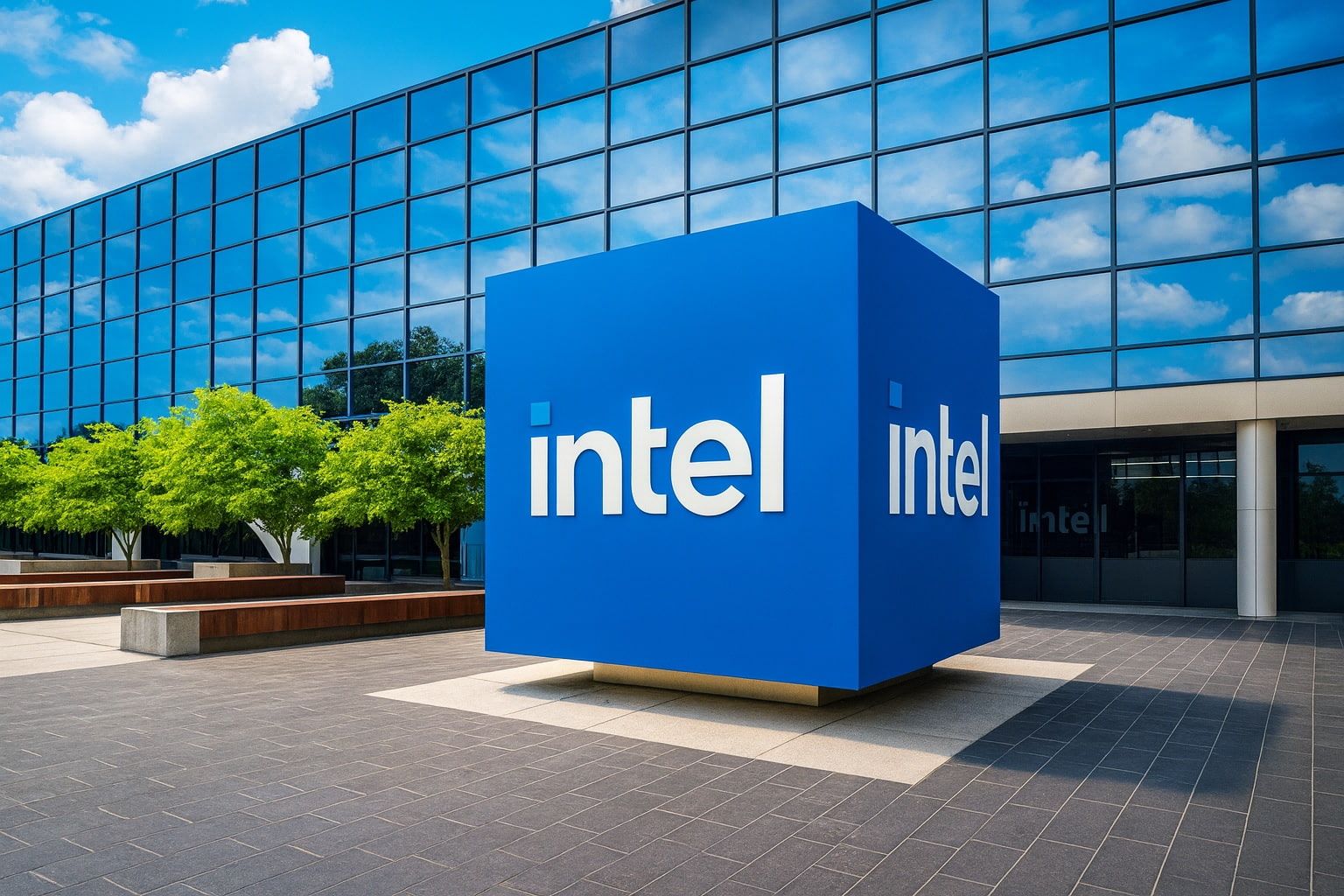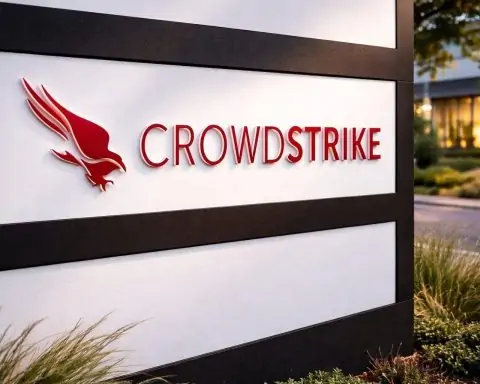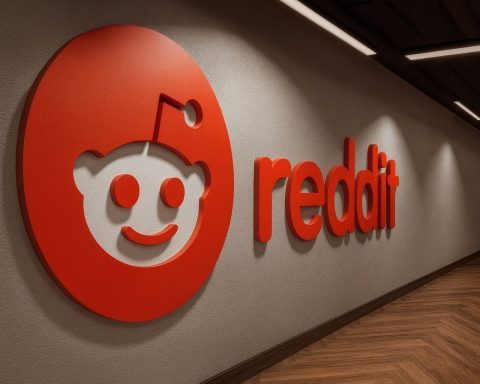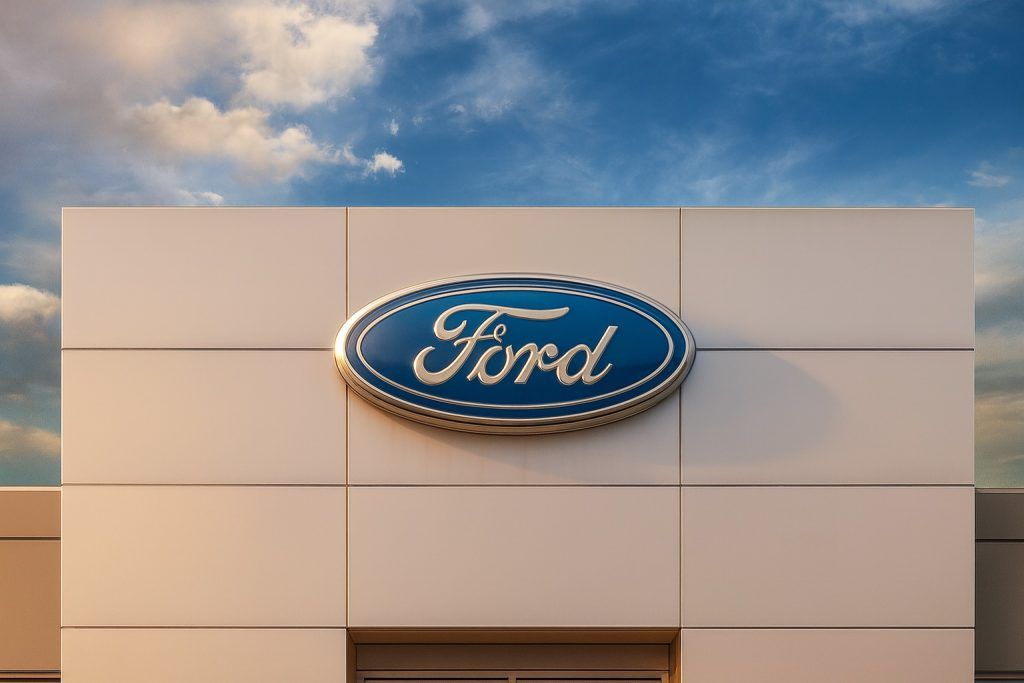- Multi-Year High: Intel’s stock (NASDAQ: INTC) has surged to around $38–$39 per share in late October 2025 – roughly an 18-month high – after jumping ~7.8% on Friday’s open [1]. The stock has nearly doubled off its January lows, up about 85–90% year-to-date, far outpacing the S&P 500 (~6% YTD) and even outperforming AI chip leaders Nvidia and AMD [2] [3].
- $15B Cash Lifeline: A trio of high-stakes backers provided Intel a massive $15 billion capital infusion this year. In August, the U.S. government took a 10% equity stake ( ~$8.9B) in Intel as part of a CHIPS Act initiative [4]. Soon after, Nvidia invested $5 billion for a ~4% stake – joining forces with Intel to co-develop next-gen AI chips – and Japan’s SoftBank bought ~$2 billion of Intel stock (about 2% stake) [5] [6]. These moves, unprecedented in scale, gave Intel a vital cash cushion and signaled confidence in its turnaround. “These investments have offered a lifeline to the stock,” noted Reuters, enabling a >90% rally in 2025 [7] [8].
- Earnings Comeback: Intel’s latest earnings showed signs of recovery. For Q3 2025 (reported Oct. 23), the company beat expectations and returned to profitability, posting $13.7 billion in revenue (3% YoY growth) and adjusted EPS of $0.23 (vs ~$0.01 expected) [9]. Gross margins jumped to ~40%, well above estimates [10]. Intel swung to a GAAP net profit (~$4.1B) after a huge loss a year ago [11]. The surprise profit sparked a share price pop of over 3% after earnings [12]. Executives called it “steady progress,” citing strong demand for PC and server chips driven by AI, though they guided a cautious Q4 outlook (revenue ~$13.3B, EPS ~$0.08) in line with forecasts [13].
- AI Chips & Foundry Focus: Under CEO Lip-Bu Tan (appointed March 2025), Intel has doubled down on artificial intelligence and foundry services to reignite growth. The company just unveiled its “Panther Lake” PC chips and “Clearwater Forest” server processors – the first products built on Intel’s cutting-edge 18A process node – slated for 2026 launch [14] [15]. Intel’s new AI-centric chips aim to challenge Nvidia’s GPU dominance and ARM-based rivals. At the same time, Intel is separating and scaling up its contract manufacturing arm (Intel Foundry Services), seeking big customers to fill its new fabs. The U.S. government’s stake came with incentives for Intel to keep control of its foundry business [16], and rumors suggest even rivals like AMD might outsource some chip production to Intel’s foundries in a role reversal [17].
- Wall Street Mixed on Outlook: Despite the frenzy, analysts remain cautious. The stock’s rapid climb – Intel now trades at ~71× forward earnings, far richer than Nvidia (~30×) or AMD (~40×) [18] – has many on Wall Street advising prudence. The average 12-month price target sits around $26–$30 (∼25% below current levels) [19]. Major firms like HSBC and BofA have downgraded Intel (to Reduce/Underperform) after the rally, warning it has “run too far, too fast” relative to its still-recovering fundamentals [20]. However, a few bulls see more upside if Intel’s turnaround gains traction – UBS recently set a high $40 target, arguing new AI partnerships and cost cuts could drive further gains [21]. The market is closely watching whether Intel can convert the current AI hype and government backing into sustainable growth, or if the stock’s momentum will fade.
Surging Stock on Turnaround Hopes
Intel shares have mounted a stunning comeback in 2025, riding optimism that the embattled chipmaker can regain its footing in the AI era. The stock has climbed roughly 90% year-to-date, closing around $38 per share at last week’s end – territory it hasn’t seen in nearly two years [22]. Just this Friday (Oct. 24), Intel spiked as much as 7.8% intraday after its quarterly earnings beat, hitting an 18-month high before settling up about 2% on the day [23] [24]. By comparison, industry darlings Nvidia and AMD – whose stocks have also surged on the AI boom – are up ~34% and ~80% YTD respectively, meaning Intel has outperformed its rivals in 2025’s market rally [25] [26]. This marks a dramatic reversal from 2024, when Intel posted its first annual loss in decades and its shares languished near multi-year lows.
Traders note that Intel’s stock momentum gained steam through late summer and early fall amid a flurry of upbeat headlines. The share price roughly doubled from its January trough (around $20) to mid-October (peaking near $39.65) [27]. An October “golden cross” – where the 50-day moving average rose above the 200-day – signaled improving technical trends, though some indicators suggest the stock may be overbought after the torrid run [28]. In recent weeks the rally saw a brief pullback of ~10% from the highs, with dip-buyers stepping in around the mid-$30s level of support [29]. Market sentiment has been bolstered by signs that Intel’s turnaround plan is finally taking hold – but volatility remains elevated. Options markets were pricing in big swings (±10%) around the latest earnings, underscoring the uncertainty ahead [30]. As of Oct. 26, Intel’s market capitalization is about $175 billion [31], having added roughly $80 billion in value this year alone.
$15 Billion in Deals: Government Lifeline and AI Alliances
Fueling Intel’s resurgence is an extraordinary series of strategic investments and partnerships engineered in recent months – a concerted effort to shore up the company’s finances and credibility. In what analysts call a “game-changer”, the U.S. government stepped in as a major investor, converting $8.9 billion of CHIPS Act subsidies into an equity stake just under 10% [32]. Announced in late August as a historic move to bolster domestic chipmaking, the deal gave American taxpayers a significant stake in Intel at $20.47 per share [33]. It also granted Washington a 5-year warrant for an extra 5% stake (exercisable only if Intel dilutes its majority control of the foundry unit) [34]. The White House touted this as aligning national security interests with Intel’s revival, with Commerce Secretary Howard Lutnick stating the administration is committed to “reinforcing our country’s dominance in artificial intelligence” while strengthening U.S. supply chains [35]. For Intel, the government’s cash injection provided a much-needed “financial cushion” as it rebuilds – effectively a lifeline to fund its roadmap while keeping its fabs on U.S. soil [36].
Hot on the heels of Uncle Sam’s backing, Nvidia – the world’s AI chip powerhouse – threw a surprise $5 billion vote of confidence Intel’s way. In mid-September, Nvidia agreed to acquire roughly a 4% stake in Intel (at $23.28/share) and collaborate on developing new chips [37] [38]. This alliance pairs Intel’s x86 processor expertise with Nvidia’s GPU and networking technology to create next-generation integrated AI computing platforms. The two companies plan to co-design “multiple generations” of products, spanning PC processors and data-center platforms that combine Intel CPUs with Nvidia accelerators and ultra-fast NVLink interconnects [39] [40]. Notably, Nvidia’s investment makes it one of Intel’s largest shareholders and came just weeks after the U.S. stake was unveiled [41]. Nvidia CEO Jensen Huang – who was seen meeting with President Trump in London the day the deal was revealed – said the partnership was driven by market logic (and not directed by Washington), calling it a natural fit to “lay the foundation for the next era of computing” focused on AI. The pact immediately sent Intel’s stock up 23% in one day [42], reflecting investor excitement that Intel might finally gain a foothold in the AI chip race with Nvidia’s support. “This is a massive game-changer for Intel that effectively resets its position from an AI laggard to a cog in future AI infrastructure,” said Gadjo Sevilla, senior analyst at Insider Intelligence [43].
Also betting on Intel’s comeback is SoftBank, the Japanese tech conglomerate helmed by Masayoshi “Masa” Son. SoftBank quietly acquired about $2 billion of Intel shares in August (at ~$23 each) – roughly a 2% stake, making it Intel’s fifth-largest shareholder [44]. The move was seen as a rare vote of confidence from Son (who’s known for big tech bets) at a time when Intel had been lagging in the AI boom while pouring billions into foundry. “Masa and I have worked closely together for decades, and I appreciate the confidence he has placed in Intel with this investment,” CEO Lip-Bu Tan said of SoftBank’s backing [45]. Unlike Nvidia’s more synergistic tie-up, SoftBank’s position is passive – it sought no board seat and made no promises to buy Intel chips [46] – suggesting it views Intel as a potentially undervalued turnaround play. Notably, SoftBank owns Arm Ltd. (the British chip IP firm) and has deep ties across the industry, so its stake also symbolically aligns Intel with SoftBank’s broader AI ecosystem. The combined ~$15 billion injection from the U.S. government, Nvidia, and SoftBank has markedly strengthened Intel’s balance sheet and credibility. After years of strained finances (Intel lost over $2.8B in 2024), the company now boasts a war chest to fund its technology roadmap. “These deals have given Intel a major cash lifeline, reviving investor confidence,” wrote TechStock² analysts [47] [48]. Wall Street’s attention has swung back to Intel as a serious contender – albeit one propped up by unusual alliances.
“Steadying the Ship”: Cost Cuts, Earnings Beat, and New Strategy
This past week’s third-quarter earnings report offered tangible proof that Intel’s turnaround efforts are bearing fruit. The company shattered expectations by returning to profit ahead of schedule. Adjusted EPS came in at $0.23 (versus basically break-even forecast) on $13.7 billion in revenue [49]. That top-line was up 3% from a year ago – a modest growth, but a relief after consecutive quarterly declines. Crucially, gross margin rebounded to around 40%, far above the ~35% consensus, thanks to intense cost-cutting and a richer product mix [50]. Intel even recorded a GAAP net income of ~$4.1B, swinging from a multibillion-dollar loss in Q3 2024 [51]. “It’s a small victory, but a victory nonetheless,” said one analyst, noting this was Intel’s first clear earnings “beat” in recent memory. The stock jumped over 3% in after-hours trading on Oct. 23 and extended gains the next morning as investors celebrated evidence that CEO Lip-Bu Tan’s belt-tightening is working.
Tan, a veteran venture capitalist who took Intel’s helm in March, has moved aggressively to “steady the ship” [52]. “Intel has turned a corner and is steadying the ship,” said Ben Bajarin, CEO of Creative Strategies, crediting Tan’s turnaround plan [53]. Since taking over, Tan has slashed costs and restructured with an almost startup-like fervor. He cut over 20% of the workforce (targeting 75,000 employees, down from ~100k) and spun off or sold non-core businesses (for instance, Intel sold a majority stake in its Altera FPGA unit this quarter) [54]. Capital spending has been reined in sharply – “We will only build factory capacity when there is concrete demand to match it,” Tan vowed [55], a subtle rebuke of his predecessor’s spend-heavy approach. These efforts brought Intel’s operating expenses down significantly, helping flip the company back into the black. “Better-than-feared guidance, visible cost and gross margin progress, AI-PC buzz, and that $15B of fresh funding – investors latched onto multiple positives in Q3,” observed Michael Schulman, CIO at Running Point Capital [56].
Intel’s leadership is framing the Q3 results as validation of their strategy. “We’re seeing steady progress on our turnaround,” CEO Tan told investors, adding that AI-driven demand for processors is creating “attractive opportunities” across PCs and servers [57]. CFO Dave Zinsner noted that order momentum picked up such that demand exceeded supply – a ‘high-class problem’ for a supplier to have [58]. Indeed, data center operators are rushing to upgrade to new Intel CPUs that support AI workloads, contributing to a resurgence in Intel’s server-chip division [59]. At the same time, Zinsner struck a cautious note about Intel’s technology challenges: he warned that yields on Intel’s forthcoming 18A manufacturing process (its most advanced node) “won’t reach acceptable levels until 2027,” later than industry peers [60]. This reality check shows Intel isn’t out of the woods – it still trails TSMC in bleeding-edge process reliability. The outlook for Q4 2025 was kept conservative: Intel guided $12.8–13.8B in revenue for the holiday quarter and about 8 cents of adjusted EPS [61], essentially matching analyst estimates. Executives said they are taking a “prudent” view of the economy but remain optimistic that the PC market’s rebound (fueled in part by Windows AI features driving upgrade cycles) and new server launches will support modest growth [62].
Wall Street sees Intel’s Q3 beat as an important milestone – but one quarter doesn’t make a trend. “We understand the desire to claim victory… but this fight is far from over; perhaps it’s better to call it a draw for now,” cautioned analysts at Bernstein, urging vigilance despite the positive developments [63]. Still, the contrast from a year ago is stark. Intel ended 2024 in crisis – posting its first annual loss since the 1980s, losing market share, and burning cash. Now, after painful cuts and with $15B of new “dry powder” in hand, the company has stabilized financially and bought itself time to execute on an ambitious roadmap [64]. As Ben Bajarin put it, the combination of draconian cost discipline and strategic capital from partners “is a strong setup for 2026” [65] [66]. Even longtime Intel skeptics have been impressed by Tan’s deal-making savvy. CNBC’s Jim Cramer – known for his exuberance – went so far as to call Lip-Bu Tan a “legendary semiconductor investor” for persuading Washington and Nvidia to bankroll Intel’s revival [67].
Betting on AI Chips and Foundry Services
The cornerstone of Intel’s comeback strategy is to pivot from being purely a PC CPU vendor into a broader provider of advanced AI chips and foundry services. With the AI revolution reshaping the semiconductor industry, Intel is eager to ensure it doesn’t get left behind again. In early October, the company gave a sneak peek of its next-generation products aimed squarely at AI workloads. At an Arizona event, Intel unveiled “Panther Lake” – its upcoming 2026 laptop CPU platform, and the first PC chip built on Intel 18A, a cutting-edge 1.8-nanometer-class process [68]. Panther Lake chips will integrate new AI acceleration features and are touted as the first “AI PC” processors, intended to make AI tasks like local generative AI and advanced speech recognition run natively on laptops. Simultaneously, Intel previewed “Clearwater Forest”, its planned 2026 data-center Xeon CPU, which will also be fabricated on the 18A node and optimized for AI and cloud workloads [69]. “We are entering an exciting new era of computing, made possible by great leaps in semiconductor technology that will shape the future for decades to come,” CEO Tan said, highlighting that these upcoming 18A chips – produced at Intel’s new Fab 52 in Arizona – combine cutting-edge silicon with advanced packaging to serve as “catalysts for innovation across our business” [70]. Intel claims 18A will be the most advanced node ever developed on U.S. soil, and is pushing to regain process leadership by 2026.
Beyond designing its own AI-enabled CPUs, Intel is also expanding into AI accelerators and graphics. It continues to market its Habana Gaudi line of AI training chips (acquired in 2019) to compete in deep learning, and its emerging Arc GPU products target accelerated computing in PCs and workstations. However, those efforts remain nascent compared to Nvidia’s dominance. Intel’s more immediate competitive weapon may be its vast installed base of x86 CPUs: the company is working on software like oneAPI and new extensions (AMX and AI Boost instructions) to allow AI models to run efficiently on standard Intel processors. On the data-center side, Intel’s upcoming Granite Rapids and Sierra Forest server CPUs (set for 2024–25) will feature up to 128 cores and beefed-up AI throughput, aiming to narrow the gap with AMD’s EPYC chips in cloud performance [71]. CFO Zinsner noted that early demand for Intel’s AI-tuned chips has been encouraging – but meeting that demand is a challenge given manufacturing constraints [72]. The company is investing heavily to ensure its factories can “outpace supply” into 2026 [73], with Tan emphasizing “disciplined execution” so that new product launches translate to revenue growth [74].
Perhaps Intel’s boldest shift is its effort to become a leading contract chip manufacturer – essentially opening its fabs to make chips for others. This is a direct play into foundry services, a domain long dominated by Taiwan’s TSMC and Korea’s Samsung. Intel has structurally separated its foundry unit and even created a new governance board for it [75], signaling seriousness about attracting external customers. The U.S. government’s stake was explicitly designed as an incentive for Intel to retain control of its foundry business and build it up [76]. In fact, under the deal, if Intel were to ever spin off or lose majority ownership of Intel Foundry Services, the government could exercise warrants for an additional ~5% stake – a clause meant to discourage Intel from abandoning U.S. manufacturing [77] [78]. So far, Intel’s foundry venture has been slow to gain traction; the company disclosed in July that it needs to land a “mega customer” for its next-gen 14A process, or else it might exit the foundry business altogether [79]. This frank warning underscored the stakes: Intel’s plan to catch rivals hinges on filling its fabs with outside orders.
There are early signs of progress. The Nvidia partnership, while not putting Nvidia’s current GPU production in Intel’s fabs, will have Intel’s foundry build custom CPUs and provide advanced packaging for joint AI platforms [80] [81]. That gives Intel a foot in the door to potentially manufacture more of Nvidia’s chips in the future if it proves its capabilities. Industry gossip suggests AMD – Intel’s arch-foe – might become a foundry client as well, outsourcing some chipmaking to Intel’s U.S. fabs to diversify from TSMC [82]. Such a scenario would have been unthinkable years ago, but the severe chip capacity constraints and geopolitical pressures (e.g. U.S.-China tensions) are upending old rivalries. Likewise, reports have floated that Microsoft could place large orders with Intel’s foundry for cloud processor needs, and even that Apple might consider a strategic stake or partnership with Intel down the line [83]. While speculative, these rumblings reflect a new openness by big tech consumers to consider Intel’s manufacturing as an alternative, especially with Washington incentivizing onshore production. Intel itself has been actively wooing customers – it inked a deal to produce chips for MediaTek last year, and is likely leveraging the government’s support to court other U.S. chip developers. To handle any new contracts, Intel is building out massive new fabs in Arizona and Ohio (a project partly funded by CHIPS Act grants) and says its Fab 52 in Chandler, AZ will start high-volume 18A production by year-end [84] [85].
Intel vs. Nvidia, AMD… and ARM: A Shifting Battlefield
Intel’s comeback bid is unfolding amid fierce competition on multiple fronts – not just from longtime x86 rivals like AMD, but also from the rise of ARM-based chips and the juggernaut that is Nvidia in AI. In the booming market for AI accelerators (chips for training and running AI models), Nvidia remains the undisputed leader, commanding an estimated 80–90% share of data-center AI workloads [86] [87]. Its high-end GPUs like the H100 are essentially indispensable for cutting-edge AI – helping drive Nvidia’s market cap past $1 trillion this year [88]. AMD, meanwhile, has been leveraging its acquisition of Xilinx and new MI300 AI chips to capture some of the AI momentum as well. AMD’s stock recently hit all-time highs (~$240) after securing big wins (supplying chips to OpenAI, Oracle, and others), and its market value (~$350B) now eclipses Intel’s by a wide margin [89] [90]. In consumer and server CPUs, AMD has steadily eroded Intel’s share over the past few years, particularly in lucrative data-center processors. “AMD has been seizing market share in desktops and laptops for quite some time,” notes David Wagner of Aptus Capital, adding that Nvidia’s backing might help Intel fight back, but AMD remains a formidable competitor with an “AI-forward strategy” of its own [91].
The wildcard in this fight is ARM – not a direct competitor as a company (Arm Holdings licenses chip architectures), but as a technology ecosystem. The industry’s shift toward Arm-based processors is accelerating, posing a longer-term threat to Intel’s x86 empire. In the PC arena, Arm chips have upended the status quo thanks to Apple’s M1/M2 silicon, which proved that Arm-based designs can outperform Intel chips in laptops on power and performance. Microsoft has taken notice: with Qualcomm’s exclusivity to make Windows on Arm chips expiring, Microsoft is actively encouraging new Arm-based PC chips to challenge Intel [92] [93]. According to Reuters, both Nvidia and AMD have quietly begun designing Arm-based CPUs for Windows PCs, aiming to launch as soon as 2025 [94] [95]. Nvidia, for instance, is working on Arm PC chips as part of Microsoft’s plans to diversify away from reliance on Intel, after seeing Apple’s success [96] [97]. AMD is reportedly doing the same [98]. This means by next year, Intel could face Arm-powered PC processors from all sides – Apple’s Macs on the high-end, Qualcomm on the low-power end, and new entrants from Nvidia/AMD in the mainstream laptop market. “Microsoft learned from the ’90s that they don’t want to be dependent on Intel again,” says Jay Goldberg of D2D Advisory, noting the software giant is determined to foster a multi-chip vendor ecosystem [99]. Intel has responded by adding more AI features to its own PC chips (it even demoed a laptop running ChatGPT-like AI entirely on the CPU [100]), but the coming Arm competition in Windows PCs could pressure Intel’s bread-and-butter client business like never before.
In the data center, Arm’s incursion is also gathering pace. New Arm-based server chips from Amazon (Graviton), Google, and Microsoft themselves are being deployed in cloud data centers, favored for their power efficiency. Arm Holdings says its designs may account for 50% of all data-center CPU sales by the end of 2025, a stunning jump from just ~15% last year [101] [102]. Nvidia is contributing here too with its Arm-based Grace CPU (often paired with Nvidia GPUs in AI supercomputers) [103]. The appeal: Arm chips often deliver better performance-per-watt than Intel or AMD chips [104], an important edge given the massive electricity usage of AI data centers. This trend directly threatens Intel’s Xeon franchise. To be sure, moving from x86 to Arm in servers isn’t trivial – decades of software are built for x86 – but cloud giants with in-house engineering muscle are making the switch, lured by cost and efficiency gains [105] [106]. Intel is not standing still: it’s working on its own hybrid ARM/x86 solutions (and interestingly, collaborating with ARM Ltd. to enable foundry customers to build ARM chips on Intel fabs). Still, the days of Intel’s near-monopoly in servers are over – Arm and custom silicon are the new challengers. This shifting landscape is one reason Intel is betting heavily on foundry: even if it loses CPU socket share, it might fabricate the chips others design.
Meanwhile, in the broader chip industry, tailwinds and risks abound. The overall semiconductor market is in an “AI supercycle,” projected to reach a record ~$697 billion in sales in 2025 [107]. TSMC, the world’s top foundry, just posted record profits and raised its revenue growth forecast to ~35% for 2025 on “very strong” AI chip orders [108]. Chip equipment makers (ASML, Applied Materials, etc.) are also booming. And easing inflation plus hopes of lower interest rates have lifted all tech stocks recently – providing a nice macro boost to Intel’s shares on top of the company-specific news. However, some caution that the AI frenzy may be forming a bubble reminiscent of the dot-com era. Valuations are stretched, and not every company hyping AI will deliver. Even former Intel CEO Pat Gelsinger mused this month that “of course we’re in an AI bubble” when every firm is touting AI for fear of missing out [109]. For Intel, the core question is whether it can turn the current hype into sustainable results. The company has pinned its future on catching up in technology (with 18A/20A process nodes and advanced packaging), winning big foundry deals, and leveraging AI to revive demand for its chips. It must also navigate external headwinds – geopolitical tensions (Intel is lobbying to ease U.S. export curbs that could cut it off from the China market), competitive product launches from Apple/AMD/Nvidia, and the integration of these new partnerships.
Investor Sentiment and Forecasts
After this year’s remarkable rally, investor opinions on Intel are sharply divided. Optimists believe the company’s drastic restructuring and high-profile partnerships have finally positioned Intel for a true comeback in the next couple of years. They point to Intel’s roughly $15B in fresh funding as “dry powder” to invest in innovation and capacity [110] [111]. They also cite Intel’s huge existing footprint – hundreds of millions of PCs still use Intel chips – as an installed base to drive upgrades (for example, selling AI accelerators or software to those customers). “Intel has turned a corner,” argues Creative Strategies’ Ben Bajarin, who sees the cost cuts plus capital infusions as setting up a “strong 2026” for the company [112]. Some on Wall Street have raised their forecasts accordingly: UBS analysts upgraded the stock and say it could reach $40+ if Intel secures major foundry customers and executes its roadmap [113]. A few others have noted that Intel’s data-center business might be near a bottom and could rebound as enterprise IT spending picks up in 2024. Notably, retail investors and tech forums have been abuzz about Intel being a “turnaround play” and a way to play AI on the cheap – given Nvidia’s stock (and P/E ratio) is much higher by comparison.
However, a larger contingent of analysts urge caution, warning that Intel’s share price has run far ahead of its fundamentals. Even after the recent earnings beat, Intel’s profit margins and growth are a far cry from industry leaders. “The stock’s nearly doubled this year, but the earnings haven’t,” one skeptic notes. Intel’s forward price-to-earnings multiple near 71× is lofty – more than double that of Nvidia (~30×) or AMD (~40×) – implying investors are already baking in a dramatic Intel turnaround that may or may not materialize [114]. The consensus analyst price target is only in the high-$20s [115], suggesting Wall Street on average sees the stock overvalued at current ~$38 levels. In recent weeks, multiple firms have downgraded Intel’s rating: HSBC cut it to a “Reduce”, and Bank of America reiterated an “Underperform,” both essentially sell-equivalent ratings [116]. Their rationale: Intel’s rally has been “too far, too fast” and is “deal-driven” – fueled by one-off events (government aid, etc.) rather than sustainable competitive wins [117]. Until Intel proves its new products can truly rival AMD’s EPYC processors or Nvidia’s GPUs, the bears argue, the company’s core business remains vulnerable. “Intel still has a lot to prove on its technology roadmap – especially delivering its 18A chips on time and ramping its foundry,” said a veteran chip analyst, who keeps a sell rating [118]. Any slip-ups in execution or demand could prompt a sharp correction in the stock, they warn, given the lofty expectations built into the price.
Market indicators show some traders are hedging their bets. Short interest in INTC shares has ticked up, and as mentioned, the options market is pricing elevated volatility. Near-term, a pullback to digest gains wouldn’t surprise many – indeed, in late October the stock already cooled from ~$40 to mid-$ Thirty’s before stabilizing [119]. “We wouldn’t be shocked to see profit-taking,” wrote one research note, “especially if the Q4 guidance had been soft.” (Intel’s Q4 outlook was conservative but acceptable, avoiding any immediate selloff [120].) Longer term, much will depend on whether Intel can capitalize on its second chance. As Running Point’s Michael Schulman noted, investors cheered a confluence of positives this quarter – but continued success isn’t guaranteed [121]. The company needs to hit process milestones (delivering 18A on time), successfully launch Panther Lake and other chips, and convert at least a couple big foundry customers to validate that side of the strategy. It’s a tall order, and Intel’s competitors are not sitting still. AMD and Nvidia will fiercely defend their turf, and Arm-based upstarts will keep attacking the x86 stronghold.
For now, Intel’s stock remains one of 2025’s most talked-about tech stories, embodying both the promise and the peril of the AI era. Backed by Washington and Silicon Valley alike, Intel has staged a comeback that few anticipated a year ago. The newfound optimism around this 55-year-old Silicon Valley icon is almost palpable. “Better to be lucky and good,” an Intel shareholder quipped, referencing how both external aid and internal execution have aligned in Intel’s favor of late. Whether the rally can keep going will hinge on turning this momentum into tangible market share wins. If Intel’s upcoming quarters show continued improvement – even modest revenue growth and margin expansion – bulls will argue the company’s strategic pivot is succeeding and merits a higher valuation. But if growth stalls or technological slips occur, skeptics will say the stock’s leap was premature, and gravity could pull it back down. As the year closes, Intel stands at a crossroads between hype and hard reality. The company’s bold bets on AI and manufacturing might just reinvent its future – or remind investors that turnarounds in tech are rarely easy. For now, Intel has regained the market’s attention, and the next few quarters will be crucial in determining if this dramatic rally ultimately goes down as a temporary AI-fueled fever or the start of Intel’s long-term renaissance [122] [123].
Sources: Official Intel investor releases; Reuters, Bloomberg and CNBC reporting; TechStock² (TS2.tech) analysis [124] [125] [126] [127] [128] [129] [130] [131] [132] [133] [134], among others. All data current as of Oct. 26, 2025.
References
1. www.reuters.com, 2. ts2.tech, 3. www.reuters.com, 4. ts2.tech, 5. ts2.tech, 6. www.trendforce.com, 7. ts2.tech, 8. www.reuters.com, 9. ts2.tech, 10. ts2.tech, 11. ts2.tech, 12. ts2.tech, 13. ts2.tech, 14. newsroom.intel.com, 15. newsroom.intel.com, 16. www.reuters.com, 17. ts2.tech, 18. www.reuters.com, 19. ts2.tech, 20. ts2.tech, 21. ts2.tech, 22. ts2.tech, 23. www.reuters.com, 24. www.reuters.com, 25. www.reuters.com, 26. ts2.tech, 27. ts2.tech, 28. ts2.tech, 29. ts2.tech, 30. ts2.tech, 31. ts2.tech, 32. ts2.tech, 33. www.intc.com, 34. www.intc.com, 35. www.intc.com, 36. www.reuters.com, 37. www.reuters.com, 38. www.reuters.com, 39. www.reuters.com, 40. www.reuters.com, 41. www.reuters.com, 42. www.reuters.com, 43. www.reuters.com, 44. www.trendforce.com, 45. www.trendforce.com, 46. www.trendforce.com, 47. ts2.tech, 48. ts2.tech, 49. ts2.tech, 50. ts2.tech, 51. ts2.tech, 52. www.reuters.com, 53. www.reuters.com, 54. www.reuters.com, 55. www.reuters.com, 56. ts2.tech, 57. ts2.tech, 58. ts2.tech, 59. www.reuters.com, 60. www.reuters.com, 61. ts2.tech, 62. ts2.tech, 63. www.reuters.com, 64. ts2.tech, 65. ts2.tech, 66. www.reuters.com, 67. ts2.tech, 68. newsroom.intel.com, 69. newsroom.intel.com, 70. newsroom.intel.com, 71. markets.financialcontent.com, 72. www.reuters.com, 73. ts2.tech, 74. www.intc.com, 75. www.reuters.com, 76. www.reuters.com, 77. www.reuters.com, 78. www.reuters.com, 79. www.reuters.com, 80. www.reuters.com, 81. www.reuters.com, 82. ts2.tech, 83. ts2.tech, 84. newsroom.intel.com, 85. newsroom.intel.com, 86. ts2.tech, 87. markets.financialcontent.com, 88. ts2.tech, 89. ts2.tech, 90. ts2.tech, 91. www.reuters.com, 92. www.reuters.com, 93. www.reuters.com, 94. www.reuters.com, 95. www.reuters.com, 96. www.reuters.com, 97. www.reuters.com, 98. www.reuters.com, 99. www.reuters.com, 100. www.reuters.com, 101. www.reuters.com, 102. www.reuters.com, 103. www.reuters.com, 104. www.reuters.com, 105. www.reuters.com, 106. www.reuters.com, 107. ts2.tech, 108. ts2.tech, 109. ts2.tech, 110. ts2.tech, 111. ts2.tech, 112. www.reuters.com, 113. ts2.tech, 114. www.reuters.com, 115. ts2.tech, 116. ts2.tech, 117. ts2.tech, 118. ts2.tech, 119. ts2.tech, 120. ts2.tech, 121. ts2.tech, 122. ts2.tech, 123. ts2.tech, 124. ts2.tech, 125. www.reuters.com, 126. ts2.tech, 127. www.reuters.com, 128. www.trendforce.com, 129. ts2.tech, 130. ts2.tech, 131. newsroom.intel.com, 132. www.reuters.com, 133. www.reuters.com, 134. www.reuters.com







